
by Gardens of Babylon | Jun 22, 2025
July has plenty of challenges; protecting landscapes from intense heat, severe weather, and annoying pests – it’s not always an easy task! Here are some landscaping tips to keep in mind during July so that you can keep your yard thriving even during the most intense and unpredictable summer months:
- Remove any weeds, mow and water the lawn as needed; continue through the summer.
- Pay attention to the water needs of lawns, ornamental plants and vegetables, and especially new plants with undeveloped root systems and to outdoor potted plants, which can dry out quickly. Water in the early morning hours to minimize evaporation.
- Pay attention to the water needs of lawns, ornamental plants and vegetables, and especially new plants with undeveloped root systems and to outdoor potted plants, which can dry out quickly. Water in the early morning hours to minimize evaporation.
- Prune dead or broken branches of trees and shrubs; avoid major pruning during the heat of summer.
- Continue to check ornamentals, flowers, and vegetables for aphids and spider mites.
- Inspect broadleaf evergreen shrubs for scale insects, and treat as necessary.
- Watch for lace bugs on azaleas, pyracantha and lantana.
- Fertilize hanging baskets and other container plants regularly.
- To reduce mosquito pests, check house gutters and any containers for standing water.
To begin your next project, schedule a phone consultation!
If you would like to work with your existing designer, simply fill in their name in the “Project Details” section.
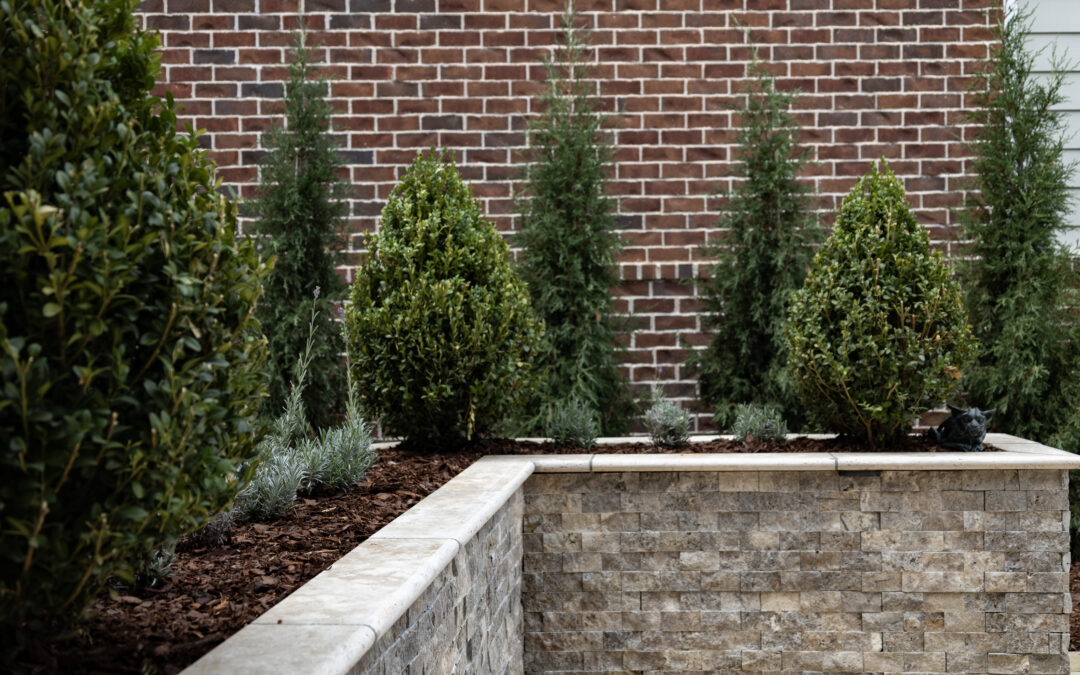
by Gardens of Babylon | Jun 19, 2025
Retaining walls play a crucial role in both the functionality and beauty of your landscape, especially in areas with challenging topography. Whether you’re dealing with a steep slope, preventing soil erosion, or looking to create more usable space, a well-designed retaining wall can transform your outdoor area into a stable and visually appealing environment.
Why Are Retaining Walls Important?
Retaining walls are essential for managing both the stability and aesthetics of landscapes, especially in regions like Middle Tennessee where the topography and climate can pose unique challenges. One of the primary benefits of retaining walls is their ability to prevent soil erosion. In areas prone to heavy rainfall, the risk of soil movement and erosion increases significantly. Retaining walls act as a barrier, holding soil in place and maintaining the structural integrity of your yard. This is particularly crucial for properties on sloped terrain, where uncontrolled soil movement can lead to landscape damage and even threaten the stability of nearby structures.
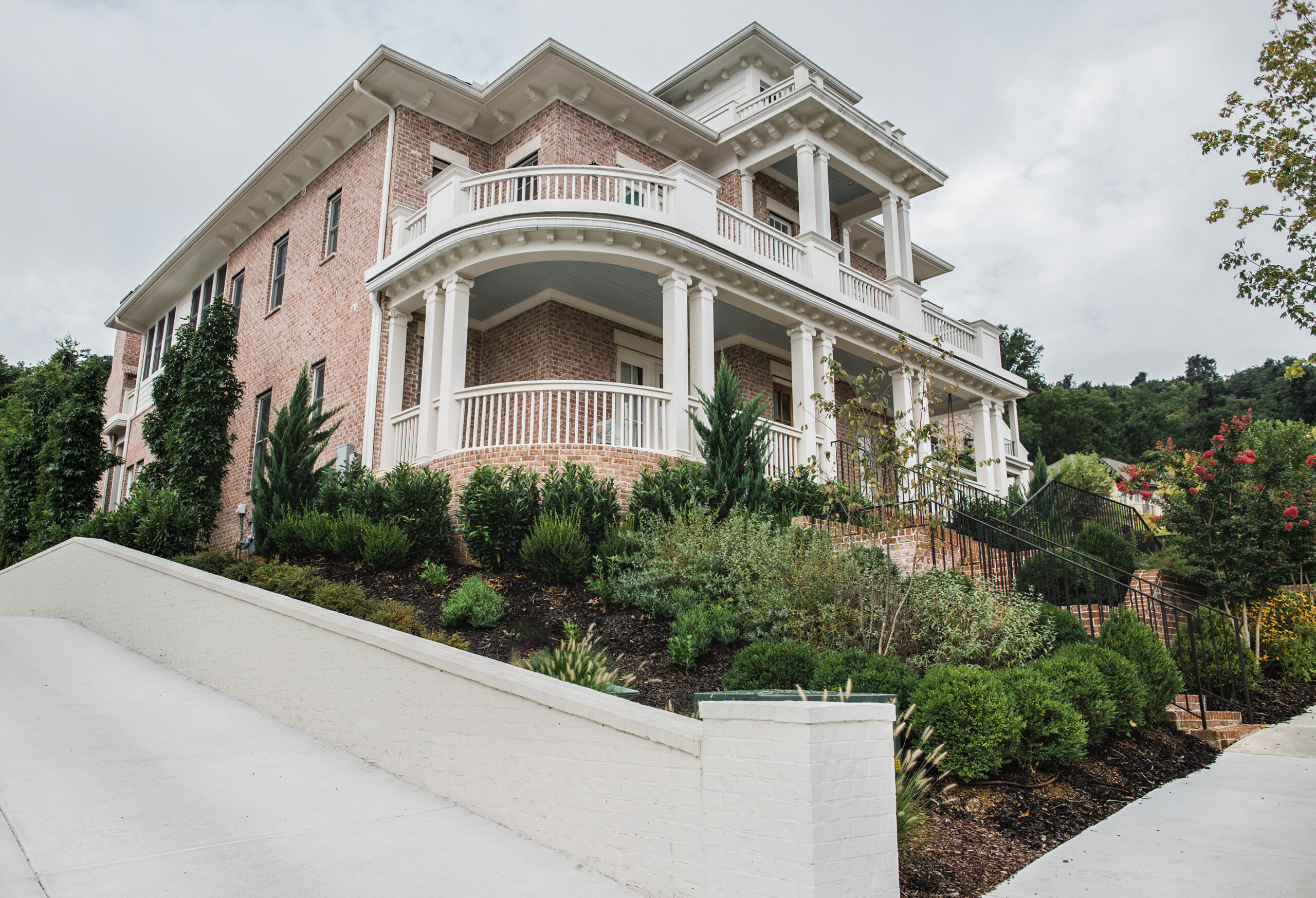
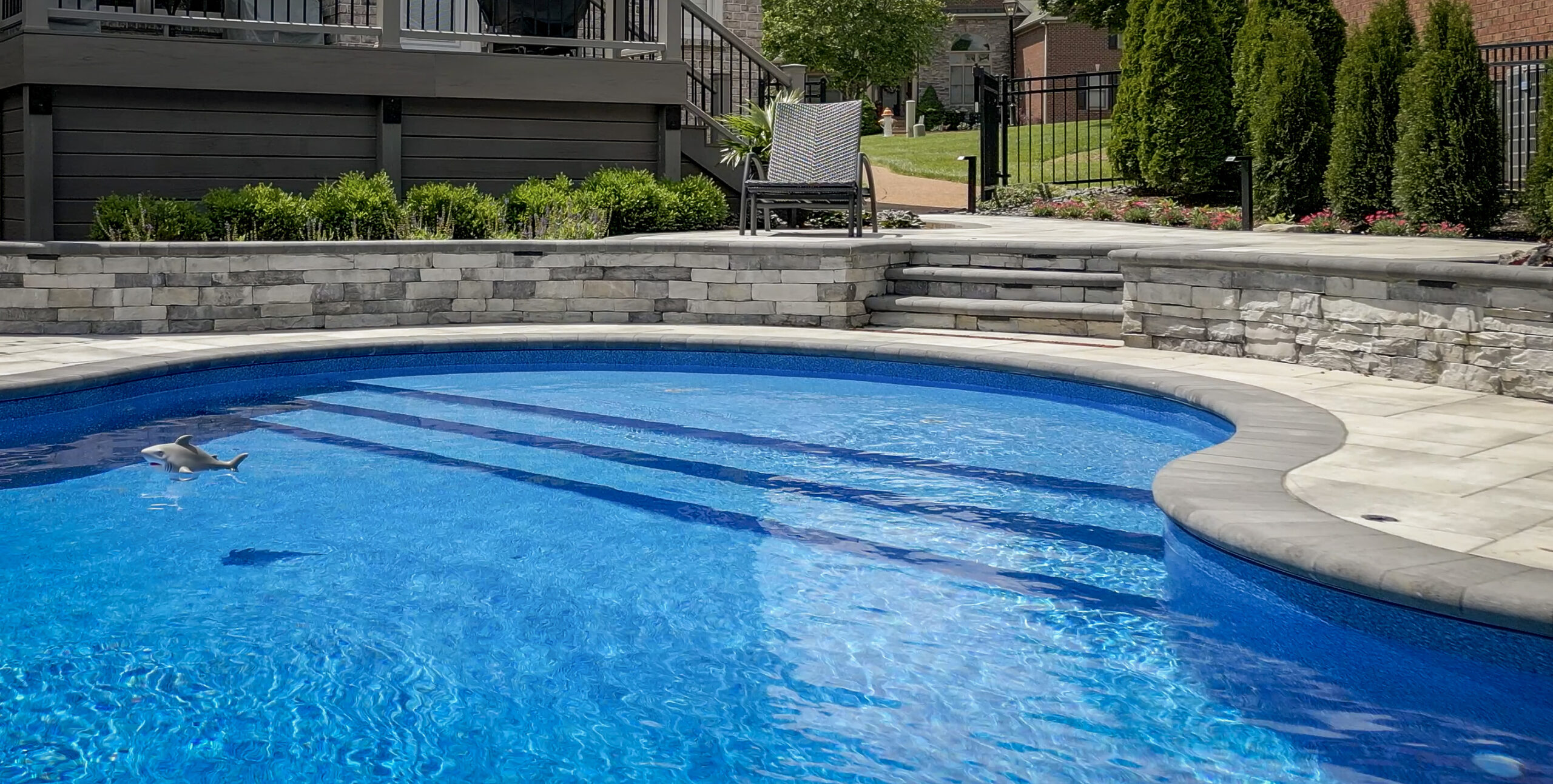
Beyond their functional role in erosion control, retaining walls also provide an opportunity to create more usable space in your yard. By transforming sloped or uneven areas into flat, stable surfaces, they open up possibilities for new garden beds, patios, or recreational areas that would otherwise be unusable. This can greatly enhance the functionality and enjoyment of your outdoor space.
Additionally, retaining walls contribute to the aesthetic appeal of your landscape. Available in a variety of materials such as natural stone, brick, and concrete, they can be customized to match the style of your home and garden. Integrating features like planters, seating, or water elements can turn a basic retaining wall into a focal point that elevates the overall design of your property. With the right design and materials, retaining walls can blend seamlessly with your landscape while providing essential structural support.
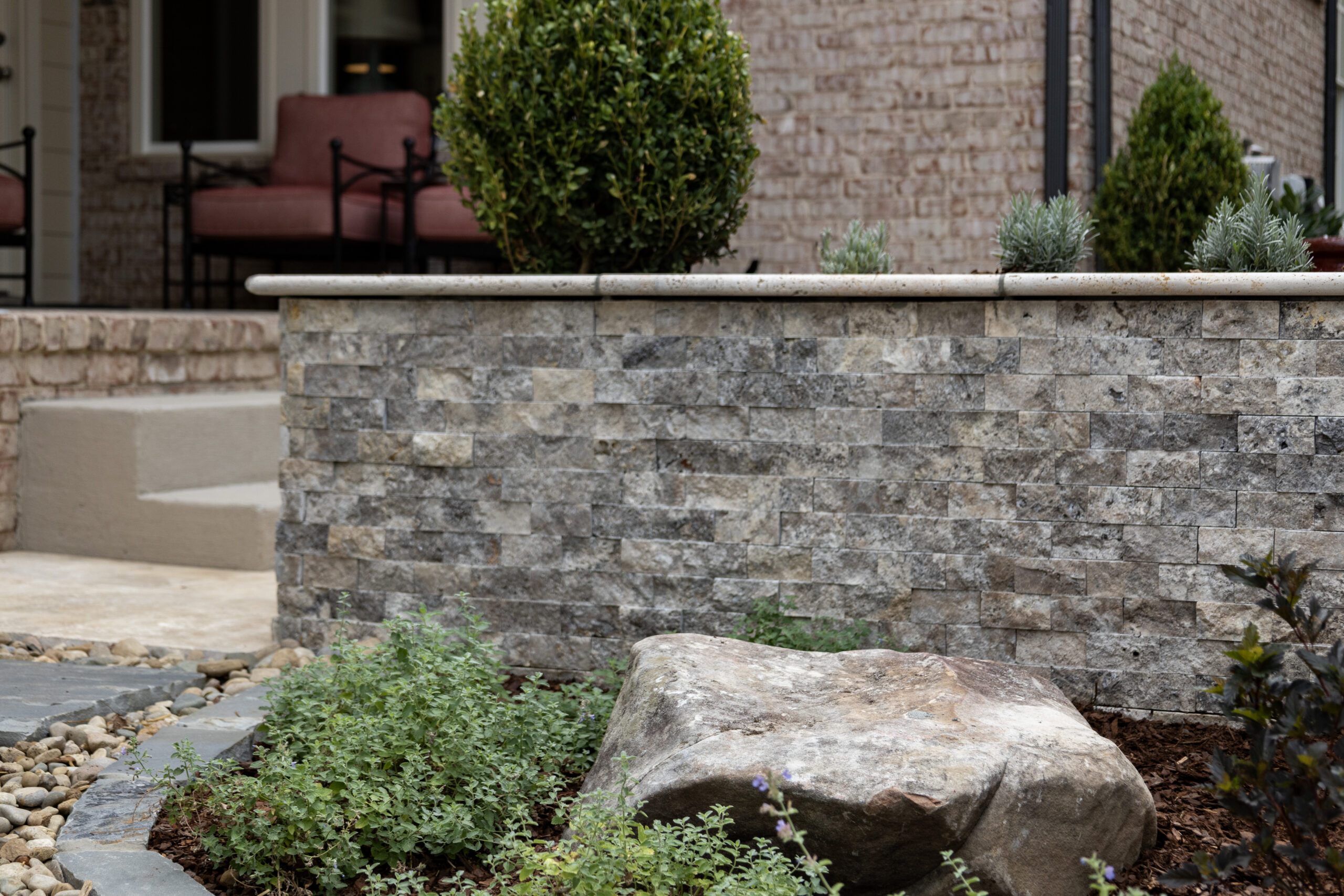
Commonly Asked Questions About Retaining Walls
What materials are best for retaining walls?
Common choices include concrete blocks, poured concrete, treated timber, and natural stone. Each material offers unique benefits depending on the look you want to achieve and the structural needs of your property. Our team can help you select the best option to suit your landscape and budget.
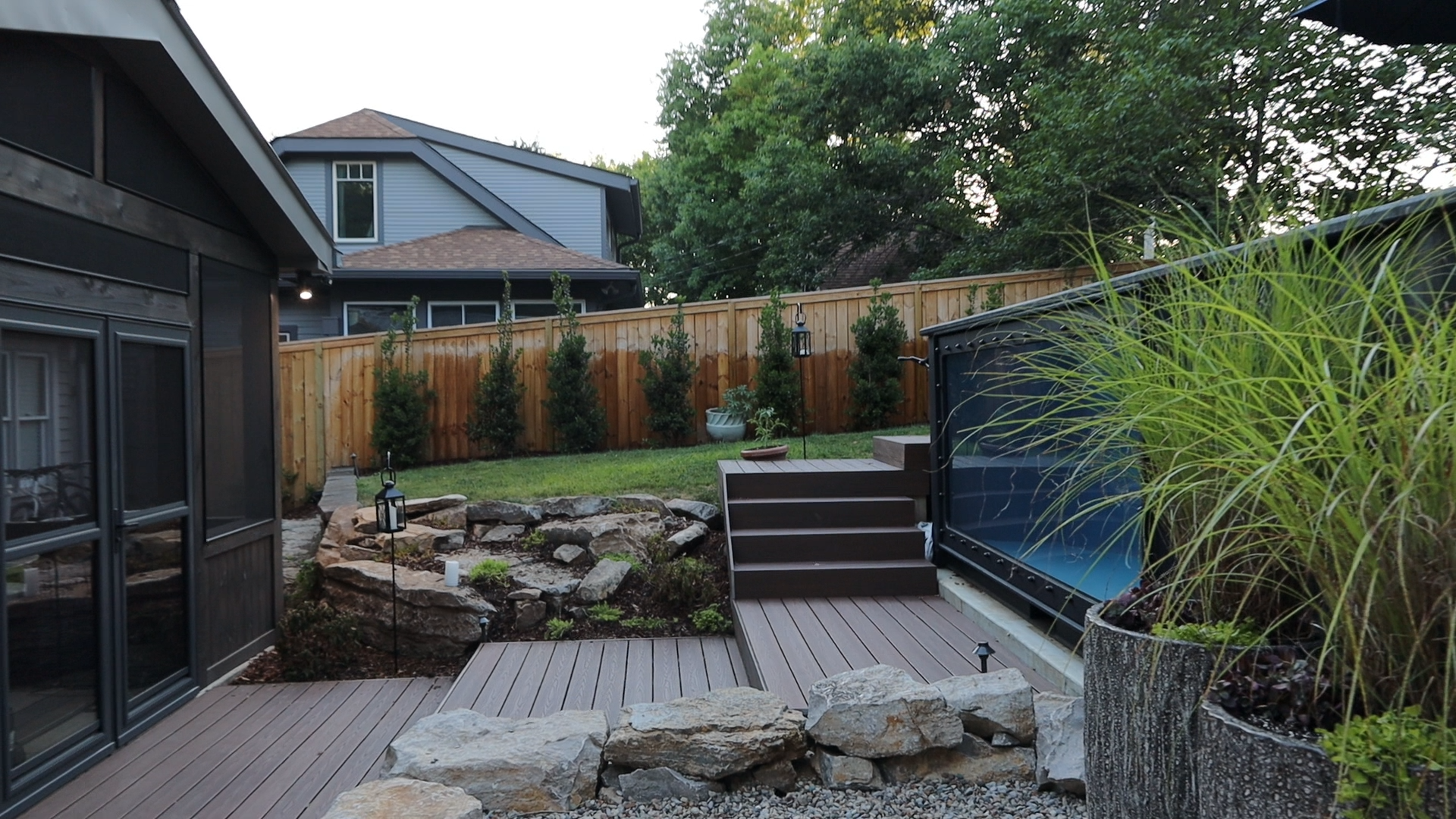
Can I DIY a retaining wall?
While small walls may be manageable as a DIY project, larger or more complex walls should be left to professionals to ensure safety and structural integrity. Mistakes in design or construction can lead to costly repairs down the line.
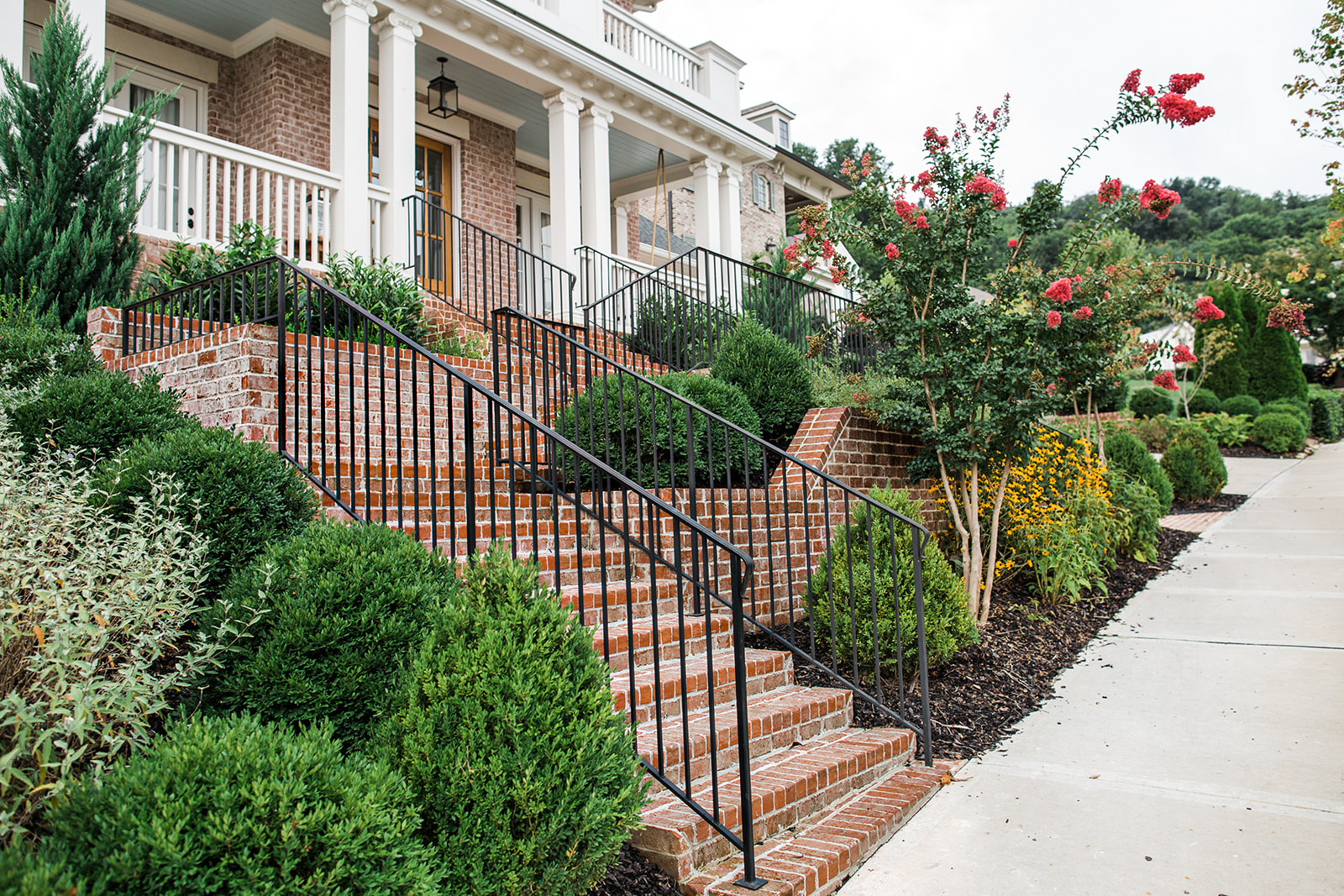
How do I choose the right type of retaining wall?
The best choice depends on your soil type, slope, wall height, and desired aesthetics. Consulting with a professional ensures you get a wall that meets your specific needs and stands the test of time.

Why Choose Gardens of Babylon for Your Retaining Wall Project?
At Gardens of Babylon, we understand the unique landscape challenges of Middle Tennessee. Our team of experts is well-versed in designing and constructing retaining walls that not only serve their functional purpose but also enhance the beauty of your property. We take into account local soil conditions, climate, and your personal preferences to create a solution that is both effective and aesthetically pleasing.
Whether you need a simple garden wall or a complex multi-level structure, we can help you transform your outdoor space into a stable, beautiful, and usable area. Our commitment to sustainability and collaboration ensures that every project is handled with care, using eco-friendly practices and materials whenever possible.

Ready to Elevate Your Landscape?
Let’s build something beautiful together. Contact us today to schedule your consultation and discover how a custom retaining wall can transform your outdoor space into a functional and beautiful extension of your home.

by Gardens of Babylon | Jun 6, 2025
–
Are you a lap swimmer or a lounger? Do you host or do you like enjoying your pool in solitude? The life you live determines the pool that belongs in your yard! Let’s explore how pool shapes, functions, and features can reflect your unique lifestyle—so whether you’re an entertainer, wellness seeker, or something in between, there’s a pool for you:
The Social Butterfly Pool
Lives for parties and cocktails by the pool—think expansive decks, plenty of seating, and clusters of bold containers brimming with color. Picture plenty of room for mingling, lounging, and moving between zones. Think natural stone, decorative concrete, or composite decking that balances beauty with durability. For setting the party mood: LED color lighting, string lights overhead, and integrated fire features for after-dark hosting. Add a built-in sound system to set the tone, and a outdoor kitchen to keep the snacks close!

The Family Fun Pool
Prioritizes safety and play—shallow areas, curved edges, built-in steps. This pool is made for cannonballs, sticky popsicle fingers, and floaties. It’s not just a place to cool off—it’s the backdrop for childhood summers, Saturday BBQs, and impromptu evening swims that tire the kids out. It could feature shallow entry zones, soft edges (no sharp corners for running kiddos), built-in bench seating for play breaks, and slip-resistant decking.

The Lounge Pool
Think sleek, rectangular plunge pool with clean lines, privacy screens, and minimalist landscaping. This is not just a pool—it’s a sanctuary. A place where the water is still, the lines are clean, and the world quiets down for a while. Designed for reflection, rejuvenation, and intentional living. Add touches like deep charcoal or slate-colored interiors that mirror the sky and surrounding foliage. An infinity edge or spillover for subtle sound and movement. Incorporate natural materials like smooth stone, untreated wood, and neutral-toned decking that blends into the landscape.

The Wellness Pool
This pool is a lifestyle tool. Designed for people who start their day with intention, move with purpose, and believe that health extends beyond the gym. Whether you’re swimming laps, doing aquatic stretches, or just soaking in the stillness, this pool supports your rhythm of self-care. It’s clean, focused, and functional—yet still beautiful. Because wellness should feel good, inside and out! Long, narrow lanes or rectangular plunge pools ideal for swimming, resistance training, or low-impact exercise. Temperature control is a must: think heating systems or cold-plunge features for contrast therapy and seasonal use.

When you’re ready for a custom pool, turn to the professionals with a proven process and dedicated customer support! Book a consultation and get started today.

by Gardens of Babylon | Jun 6, 2025
–
When it comes to outdoor spaces, the magic is often in the details. Sure, your pool or patio might be the star—but the supporting cast? That’s where containers come in.
Custom containers are more than just pots filled with plants. They’re curated combinations of form, color, texture, and scale that reflect your personal style and bring color to your outdoor space. Whether you’re aiming for soft pastels for shade, bright sunny colors, or wild cottage charm, the right container design ties it all together!
Keep reading for some “recipes” — complete with plant lists, layout tips, and styling suggestions—so you can create showstopping focal points that thrive in your space and suit your lifestyle.
Pastel Pop

Bold and Bloomy

Shade Parade

Shady Luxe

Silver Lining

Sunburst Showstopper

Want our team to do the heavy lifting? Book a consultation with our Botanical Design team and let them know all your custom container dreams!

by Gardens of Babylon | Jun 5, 2025
Middle Tennessee’s sunny, warm climate is perfect for a variety of vibrant annuals that can brighten up any garden. With the right selection, you can enjoy a kaleidoscope of colors from spring to fall. If you’re looking to add some color to your outdoor space, here are the top five sun-loving annuals that thrive in our region.
Zinnias

Zinnias are a favorite among gardeners for their bright, bold colors and easy care. They come in a variety of sizes and hues, from vibrant reds and pinks to cheerful yellows and oranges. Zinnias are excellent for attracting pollinators like bees and butterflies. They prefer well-drained soil and full sun, blooming from late spring to the first frost.
Care Tips:
- Water regularly, allowing the soil to dry out between waterings.
- Deadhead spent blooms to encourage continuous flowering.
- Fertilize every 4-6 weeks during the growing season.
Marigolds

Marigolds are another sun-loving annual that brings a splash of sunshine to any garden. These hardy plants are known for their golden, orange, and yellow blooms, and they are great for repelling garden pests. Marigolds thrive in hot, sunny conditions and can bloom all summer long.
Care Tips:
- Plant in well-drained soil.
- Water regularly, especially during dry spells.
- Deadhead regularly to promote more blooms.
Lantana

Lantana is a resilient and colorful annual perfect for adding a tropical feel to your garden. With its clusters of small, vibrant flowers in shades of yellow, orange, pink, and red, lantana is a magnet for butterflies and hummingbirds. It thrives in full sun and well-drained soil.
Care Tips:
- Water moderately, allowing the soil to dry out between waterings.
- Prune lightly to maintain shape and encourage new blooms.
- Fertilize every month during the growing season.
Coleus

While traditionally known for its shade preference, modern coleus varieties thrive in full sun, offering stunning foliage in an array of colors and patterns. Coleus adds a unique texture and vibrant color contrast to your garden beds and containers.
Care Tips:
- Plant in well-drained soil.
- Keep the soil consistently moist but not waterlogged.
- Pinch back the tips to promote bushier growth.
Petunias


Petunias are versatile and come in a wide range of colors and patterns. They are perfect for garden beds, hanging baskets, and containers. Petunias love the sun and will provide continuous blooms throughout the summer with proper care.
Care Tips:
- Plant in full sun.
- Water consistently, keeping the soil moist but not waterlogged.
- Pinch back leggy growth to maintain a bushy shape.
Let Us Help You Create a Stunning Garden!
Bring Your Flower Bed to Life — Visit Us Today!
Choosing the right annuals can instantly brighten up your outdoor space, and we’re here to make it easy and fun. Stop by the Gardens of Babylon garden center to explore our wide selection of sun-loving annuals, all handpicked for success in Middle Tennessee. Ask about our free in-store sketch — a quick, customized planting layout tailored to your space, sunlight, and style. Perfect for entryways, containers, foundation beds, and other small areas.
No appointment needed — just stop by with photos and measurements, and we’ll help you choose the right plants and sketch out a plan that brings your space to life.





























